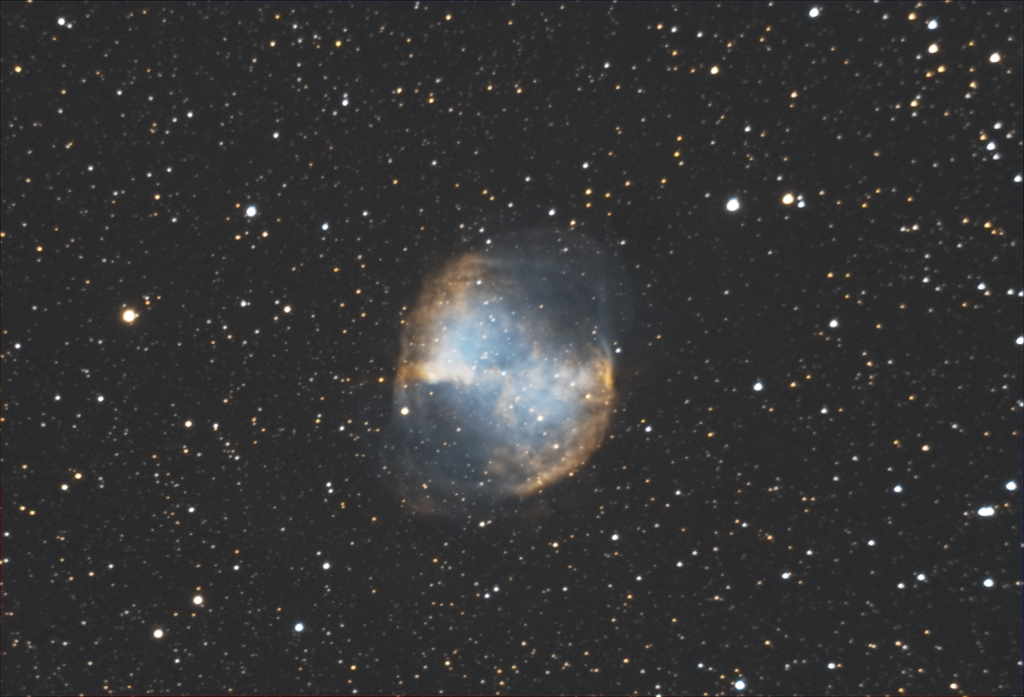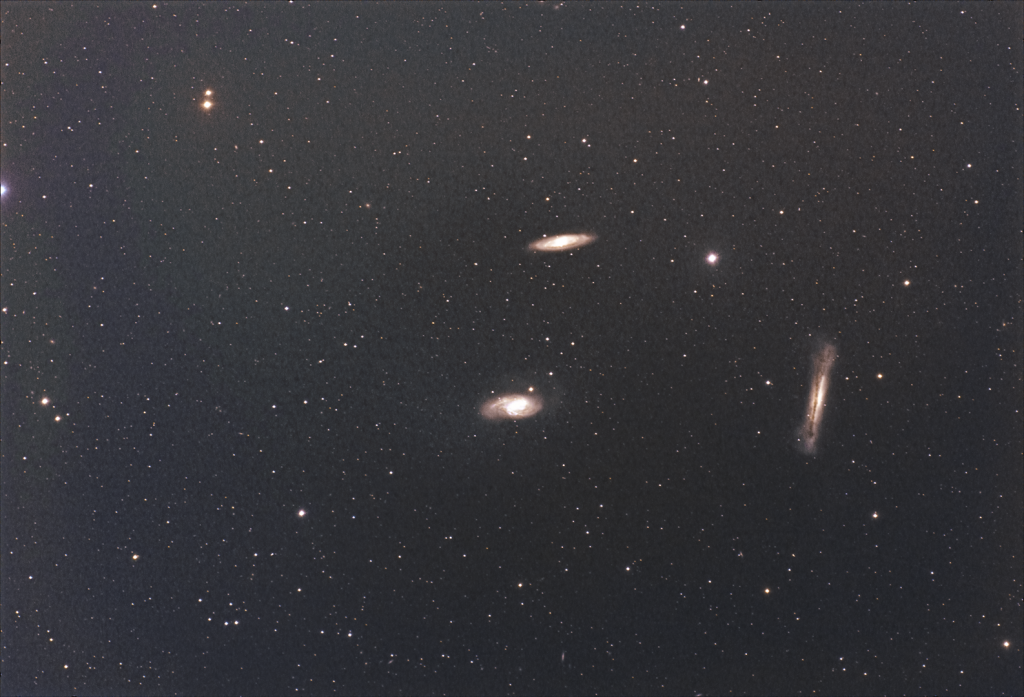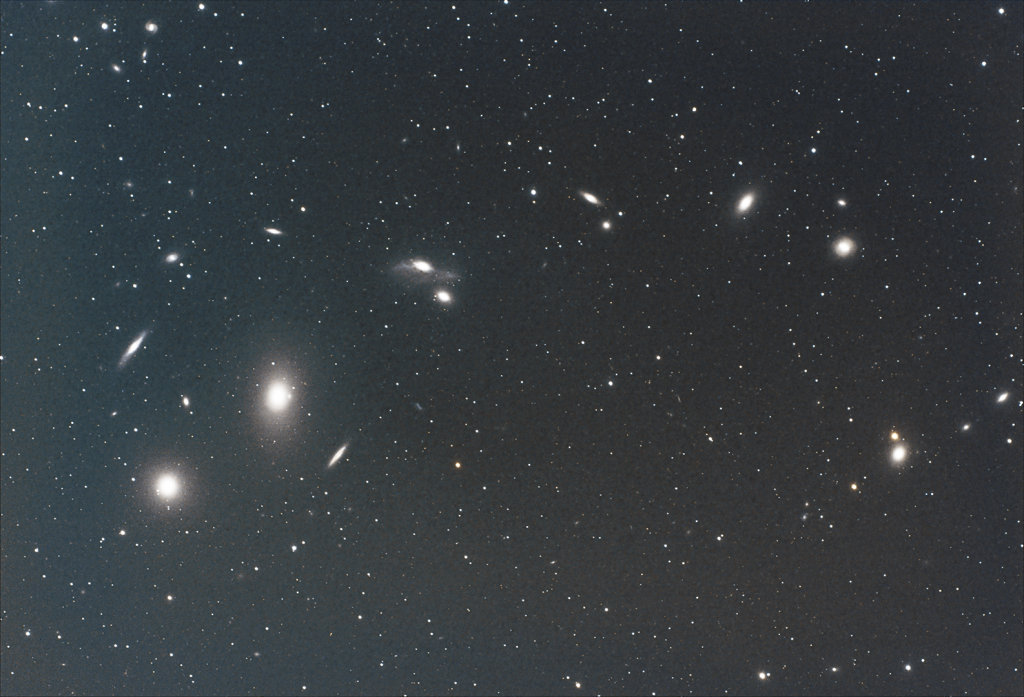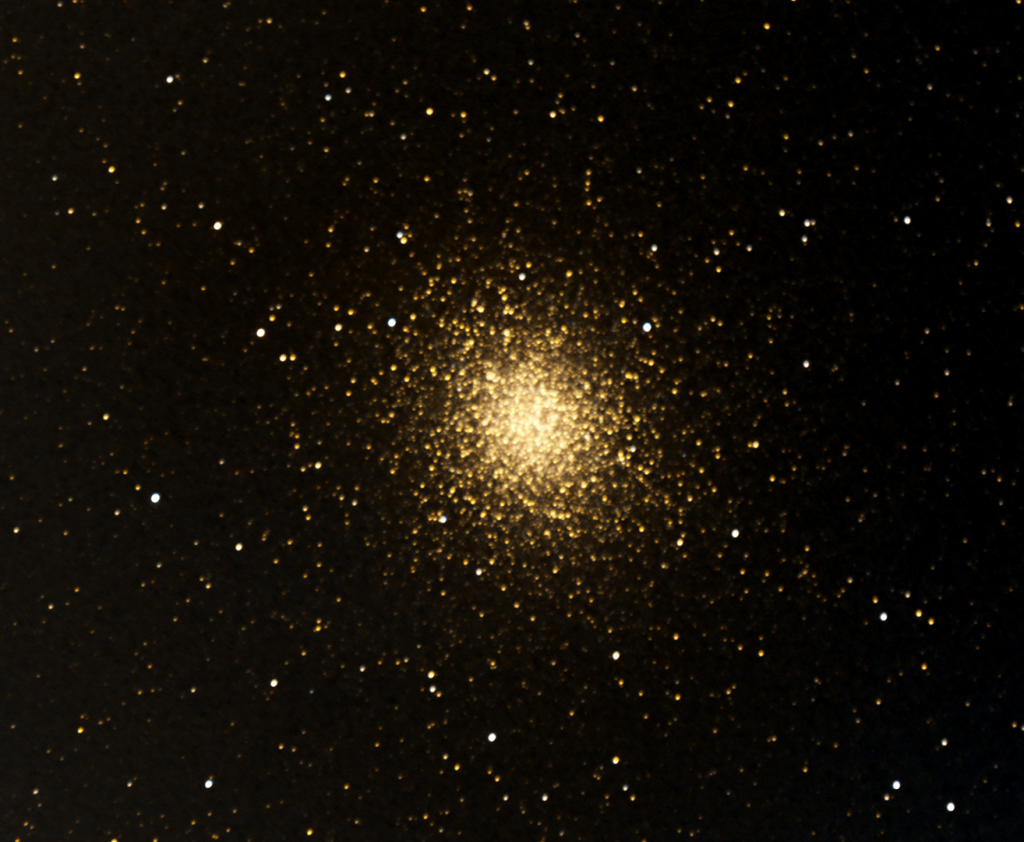
I shot this Thursday night at the River Ridge Observatory with my C11 at prime focus, all 2800mm of focal length. It’s 30 two minute images combined. This is the Dumbbell Nebula (aka Apple Core Nebula or Messier 27) in the constellation of Vulpecula (the little fox). It is a planetary nebula, one of the brightest, which are the remains of the extended atmosphere of all but dead stars called white dwarfs. The radiation from the very hot white dwarf excites the molecules in this nebula and causes it to glow. It is not symmetric because we are seeing it from the side and either the top and bottom of the apple or the two “bites” taken out of it represent the rotational axis of the white dwarf. I’m not sure which.



